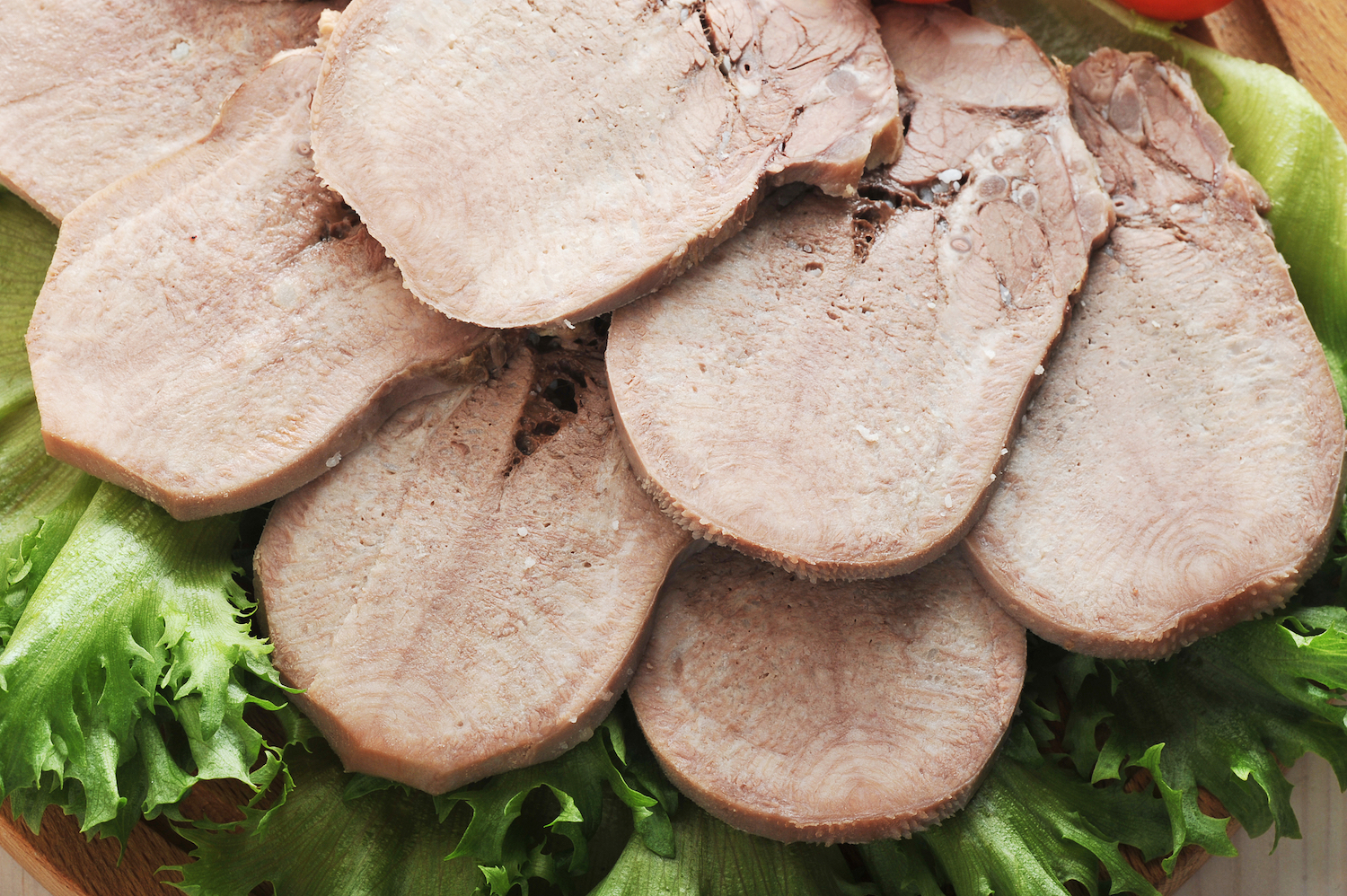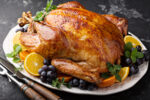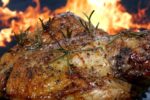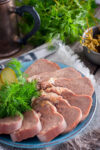
A Variety of Beef Tongue Recipes
Beef tongues used to be a popular dish, but I’ve never seen recipes for them in modern cookbooks. My mother said she ate tongue when she was a child, back in the 1940s, but she never cooked them when I was growing up. I’ve seen tongue for sale in grocery store meat departments, but haven’t had any desire to learn to cook it. Tongues are sold as beef or ox tongues, but they’re both the same.
INFORMATION BELOW FROM 1800s COOKBOOKS
ABOUT BEEF TONGUES
Cut off the roots of the tongues. They are not good smoked, but they make nice pies. Take out the pipes and veins, boil them till tender, and mince them fine. Season the meat with salt, cloves, mace, and cinnamon. Put in a little sugar and molasses, moisten the whole with brandy, put it in a cool place, and it will keep good several months in cold weather. It is good to make pies of at any time with the addition of apples chopped fine, and a little butter melted.
For the remainder of the tongues, make a brine in the following manner—to a gallon of cold water, put a quart of rock salt, an ounce of saltpeter,* one-fourth pound of sugar, and a couple of tablespoons of salt. Put in the tongues, let them remain in it a week, and then smoke them eight or ten days.
*saltpeter – potassium nitrate, an early food preservative, but rarely used now.
BOILED BEEF TONGUE
The tongue of beef makes a delicious meat that may be served hot or cold. It is usually corned or smoked to preserve it until it can be used. In either of these forms or in its fresh state, it must be boiled in order to remove the skin and prepare the meat for further use.
If it has been corned or smoked, it is likely to be very salty, so it should usually be soaked overnight to remove the salt.
When boiled tongue is desired, put it into a kettle of cold water and allow it to come to a boil. Skim and continue to cook at a low temperature for two hours. Let it cool enough to handle and then remove the skin and the roots. Cut into slices and serve hot or cold.
Do not split it in half when you dish it, as is the practice with some cooks. Cutting it lengthways spoils the flavor, and renders it comparatively insipid.
If you wish to serve up the tongue very handsomely, rub it with yolk of egg after you take it from the pot, and strew over it grated bread crumbs. Baste it with butter, and set it before the fire till it becomes of a light brown.
Cover the root (which is always an unsightly object) with thick sprigs of double parsley, and lay slices of currant jelly all round the tongue.
BAKED TONGUE
Take a large smoked tongue, put it into warm water and soak it all day. Change the water in the evening, and then let it remain in soak all night. Before you cook it, trim the root handsomely. Make a coarse paste or dough merely of flour and water, as it is not to be eaten. Roll it out thin, and enclose the tongue in it. Put it into an oven and bake it slowly. It will require four hours or more.
When you think it is done, break a little of the paste just over the thickest part, and try it by sticking a fork through it. If not perfectly tender, let it bake a while longer. When quite done, remove the paste, and either serve up the tongue, or set it away to get cold. This is the best way of cooking a tongue to be eaten cold. If to be eaten warm, send it to table surrounded with mashed potatoes, and the root concealed with parsley sprigs.
TONGUE TOAST
Take a cold smoked tongue that has been well boiled and grate it with a coarse grater, or mince it fine. Mix it with cream and beaten yolk of egg, and give it a simmer over the fire. Having first cut off all the crust, toast very nicely some slices of bread, and then butter them rather slightly. Lay them in a flat dish that has been heated before the fire. and cover each slice of toast thickly with the tongue-mixture, spread on hot. Send them to table covered. This is a nice breakfast or supper dish.
BEEF’S TONGUE STEWED
Take a fresh beef’s tongue of the largest size. Remove the little bones, skin, &c., from about the root, and trim it nicely. Take a tablespoon each of salt, pepper, and powdered cloves, and mix them all together. Rub the tongue well all over with this seasoning. Lay it in a deep earthen pan, cover it with the best cider vinegar, and let it stand three days, turning it frequently, and keeping it closely covered. Then (having wiped off all the seasoning) put the tongue into a stew-pot, and add half a pint of water—not more—and stew it slowly till quite done.
JELLIED TONGUE
Boil a beef tongue very slowly in water to cover. Let cool in the liquid, drain, skin, and cut into thin slices. Dissolve a package of gelatin in one cup of water.
Heat thoroughly two cups of the cooking liquid, one cup of stock, and three tablespoons of vinegar. Add two teaspoons of sugar and the dissolved gelatin. If there is not enough liquid to cover the tongue, add boiling water to make the necessary quantity. Strain through cheesecloth.
Wet a mold in cold water, pour in a layer of the jelly, and when set, add a layer of the tongue. Repeat until the mold is full. At serving time, turn out and garnish with parsley.
PICKLED TONGUE
Pickled tongue makes an excellent meat when a cold dish is required for a light meal, or meat for sandwiches is desired.
The pickle required for one tongue contains the following ingredients: one and one-half cups vinegar, two cups water, one-fourth cup sugar, one tablespoon salt, one-fourth tablespoon pepper, six cloves and a stick of cinnamon.
Boil all of these ingredients for a few minutes, then add the tongue and boil for fifteen minutes more. Remove from the stove and let stand for twenty-four hours. Slice and serve cold.
BEEF TONGUE A LA ITALIENNE
Cut a cold boiled tongue into strips. Chop fine three onions, fry in butter, dredge with flour, then add two teaspoons of lemon juice, and a cup of mushrooms. Pour into a baking dish, cover with [bread] crumbs, dot with butter, and brown in the oven. Serve with spinach or spaghetti.
SPICED BEEF TONGUE
Rub into each tongue a mixture made of one-half pound brown sugar, a piece of saltpeter the size of a pea, and a tablespoon of ground cloves.
Put it in a brine made of three-fourths pound salt to two quarts of water and keep covered. Pickle two weeks, then wash well and dry with a cloth.
Roll out a thin paste made of flour and water, smear it all over the tongue and place in a pan to bake slowly. Baste well with lard and hot water. When done, scrape off the paste and serve.
TONGUE SANDWICHES
Chop cold boiled tongue very fine. To each cupful stir in two tablespoonfuls of melted butter, dash of red pepper and about one-half teaspoonful of onion juice. Have bread sufficiently stale to cut nicely. Remove end crust, butter and cut a very thin slice; remove the crusts. Spread it with the tongue paste, roll each sandwiches carefully, tie with narrow ribbon and put away until wanted. These can be made several hours before serving.
Image from Deposit Photos
=================================================
Have You Ever Eaten Beef Tongue? Please Leave a Comment Below.
=================================================
 ODD BITS: How to Cook the Rest of the Animal
ODD BITS: How to Cook the Rest of the Animal
We’re all familiar with the prime cuts—the beef tenderloin, rack of lamb, and pork chops. But what about kidneys, tripe, liver, belly, cheek, and shank? Odd Bits will not only restore our taste for these cuts, but will also remove the mystery of cooking with offal, so food lovers can approach them as confidently as they would a steak. From the familiar (pork belly), to the novel (cockscomb), to the downright challenging (lamb testicles), Jennifer McLagan provides expert advice and delicious recipes to make these odd bits part of every enthusiastic cook’s repertoire.
Available as an ebook wherever you buy your books online.
Also available as a Hard Back Book on Amazon (choose the Amazon kindle option on the link).
=================================================




4 thoughts on “A Variety of Beef Tongue Recipes”
I grew up in a German household in Queens, New York. We would purchase the tongue at the German butcher. I was the best meat, and we loved it with mashed turnips and boiled potatoes. My daughter bought a quarter of a steer and included was a tongue. Fortunately there is a church member who could smoke it for her. I am planning to make the tongue and enjoy it fully.
My favorite story about beef tongue concerns a friend who came from Cuba. When she was a little girl she went with her father to a neighbor’s house. He had slaughtered a steer and her father had been invited to share the meat. When she saw the meat she pointed to the tongue and asked about it. Her father said it was the tongue and she promptly made an unpleasant face and said she would never eat that. Her father purchased it and said they would have it for supper. At supper time she refused to eat it and was dismissed. Years later she was attending college in Havana. At that time the people in towns were given coupons for food. Since she was no longer at home, her only source of food was the college cafeteria. One day she visited with a friend. When supper time approached she said her goodbyes and mentioned that that day’s supper had one of her favorite meats and she didn’t want to be late. Her friend replied, “You like tongue?”
My mother used to bake beef tongue but didn’t enclose it in pastry. She would boil it first, then place in a roasting pan (like you use for turkey) and surround it with dressing. Cooking it low and slow made it turn out very tender. She would slice it to bake and then serve on a platter with a big bowl of the dressing.
I’ve never had beef tongue, although I’ve seen it for sale in grocery stores.